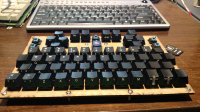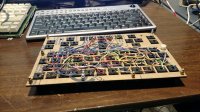Pyramancer
Fairly Idle Member
- Joined
- Feb 4, 2017
- Messages
- 232
- Age
- 125
I'm looking for the scancodes produced by the keys on the Pyra.
I found the keyboard page in the Pyra wiki (https://www.pyra-handheld.com/wiki/index.php?title=Keyboard) but I don't see scancodes there (just the keycodes under a mapping in letux-4.5.0, it says).
Any pointers to the actual scancodes would be much appreciated.
[doublepost=1494868548,1494867683][/doublepost]If letux-4.5.0 uses udev, then the .hwdb file (or equivalent) used on Letux would be useful.
I found the keyboard page in the Pyra wiki (https://www.pyra-handheld.com/wiki/index.php?title=Keyboard) but I don't see scancodes there (just the keycodes under a mapping in letux-4.5.0, it says).
Any pointers to the actual scancodes would be much appreciated.
[doublepost=1494868548,1494867683][/doublepost]If letux-4.5.0 uses udev, then the .hwdb file (or equivalent) used on Letux would be useful.



